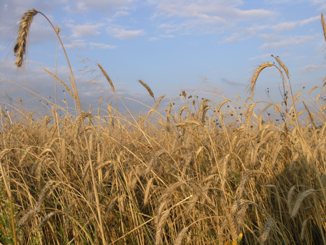Habitat
Secale cereale is though to have first been
domesticated in southwestern Asia (picture on left) from Secale anatolicum,
a variety of wild rye three to four thousand years ago. As
food grains go, it is very cold
 hardy.
It can tolerate winter temperatures down to -35 degrees Celsius
and germinate and survive at spring temperatures as low as .5
degrees Celsius.
hardy.
It can tolerate winter temperatures down to -35 degrees Celsius
and germinate and survive at spring temperatures as low as .5
degrees Celsius.
On top of being tolerant to large variations in weather,
Secale cereale can also grow in many different types of soil.
Though it prefers good loamy soi l,
it can also grow in soil composed of mainly clay or sand with
minimal ill effects. On top of this rye is very tolerant to drought. This is
a result of its extensive root system
which regularly grows between four and five feet down. This
adaptation is reminiscent of time before
domestication when growing in the west Asian steppes meant water was
scarce for much of the year.
l,
it can also grow in soil composed of mainly clay or sand with
minimal ill effects. On top of this rye is very tolerant to drought. This is
a result of its extensive root system
which regularly grows between four and five feet down. This
adaptation is reminiscent of time before
domestication when growing in the west Asian steppes meant water was
scarce for much of the year.
All of these facts compounded make rye one of the most popular and hardy cereal, or food, grains in the world. Because of this, the habitat of rye is very large. Starting in Asia, Secale cereale spread to Europe soon after. Its cultivation in Europe set the scene for it to spread to the New World as part of the Colombian Exchange in the 1500 - 1600's. Since then, rye has taken off in North America. It is grown in every state in the U.S. and also much of Canada.
Continue on to Adaptations
The world map I made myself and the second picture is from stock.xchng
